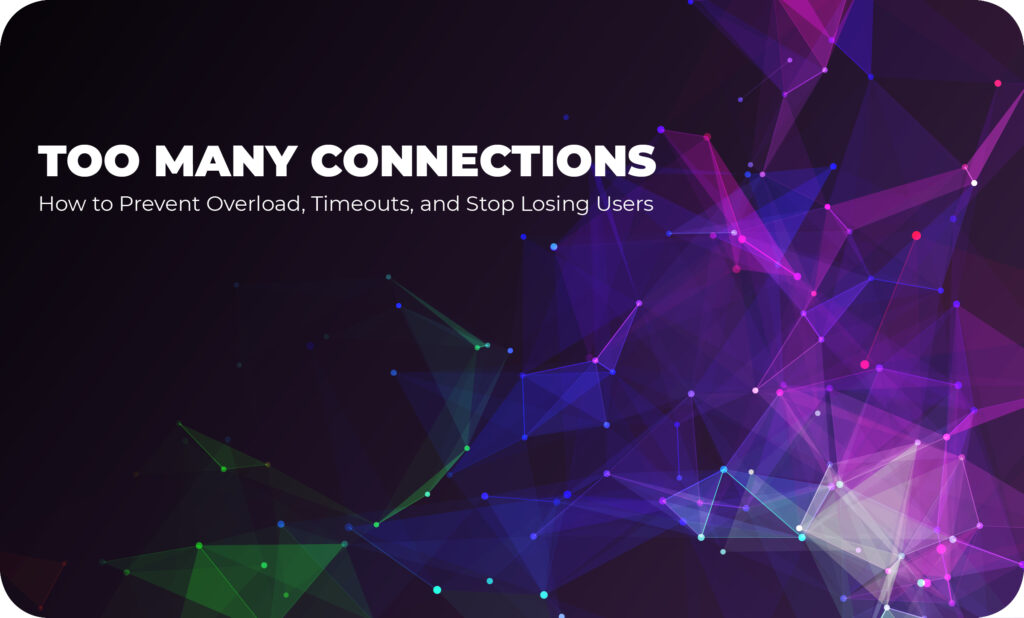

Your team launches a new feature. Everything seems perfect — until, suddenly, the alerts start. Users complain about slowness, timeouts pile up, and when you rush to investigate, you discover: the database is choked with too many connections.
This problem is more common — and more destructive — than most people realize. Worse: it appears quickly, grows exponentially, and if left unaddressed, can take your operation down.
If you’ve experienced (or want to avoid) this scenario, this article is for you. We’ll explore the causes, symptoms, and, most importantly, how to solve the problem of excessive connections before it costs money, customers, and reputation.
Why Do Connections Explode?
Excessive connections are usually not the problem itself but a symptom of deeper bottlenecks. The most common reasons include:
- Applications that don’t use connection pooling or use it incorrectly.
- Slow queries that get stuck, keeping connections open for too long.
- Deadlocks and locks that leave connections waiting.
- Application overload opening new connections uncontrollably.
- Poor infrastructure capacity planning.
Symptoms That Your Database Is Suffering from Connection Overload
- Sudden increase in the number of open connections.
- Application timeouts.
- Growing latency even in simple operations.
- Errors like “too many connections” or “connection refused.”
- Intermittent or total application crashes.

How to Prevent Overload and Timeouts in Your Database
1. Implement and Configure Connection Pooling
Connection pooling isn’t optional in scalable environments. It limits, manages, and reuses connections, drastically reducing the risk of overload.
2. Identify Queries That Keep Connections Stuck
Slow queries are hidden villains. If a query holds a connection for minutes, it blocks resources for hundreds of other processes.
Tools like dbsnOOp Flightdeck show exactly which queries are running, for how long, and what impact they are causing.
3. Monitor Locks and Deadlocks
Connections get stuck in active waiting when there are unresolved locks and deadlocks. Without visibility into these problems, the database becomes an invisible bottleneck.
4. Properly Size Your Infrastructure
It’s pointless to open hundreds of connections if your database can’t handle them. Evaluate throughput, IOPS, CPU, and RAM, and adjust connection limits based on your actual infrastructure capacity.
5. Use Observability to Anticipate the Problem
With dbsnOOp Flightdeck, you don’t just see there’s an excess of connections — you understand exactly what’s causing it. Whether it’s a spike in the application, a runaway query, or a storage issue, observability enables fast, precise action.

Real Cases: How Companies Avoided Collapses
A streaming platform saw its database collapse during peak traffic. The cause? A poorly designed API that opened a new connection for every request.
A logistics startup suffered daily crashes. The problem? A batch process without a timeout, which kept connections open until it created a queue that took the database down.
In both cases, adopting dbsnOOp Flightdeck not only allowed detection but also resolution and prevention of new incidents in just minutes.
Connection Control Is Performance Control
Excessive connections aren’t just a technical detail. They are a direct threat to the stability, performance, and revenue of your business.
Ignoring this problem means giving up on delivering a good user experience and accepting the constant risk of downtime.
When you have visibility, you have control. And those who control can prevent, optimize, and scale.
dbsnOOp Flightdeck delivers exactly that: total visibility into what’s happening in your database, allowing you to understand, act, and solve issues before they become crises.
Want to see how it works in practice? Book a meeting with our specialist or watch a live demo now.
Schedule a demo here.
Learn more about Flightdeck!
Learn about database monitoring with advanced tools here.
Visit our YouTube channel to learn about the platform and watch tutorials.


